Everything you need to consider when planning a trip to South Korea
South Korea has become a must-visit destination for travellers across the world. No matter what’s drawn you in, this South Korea Travel Guide contains everything you need.
Hey, I’m Storm. I compiled this guide after dozens of hours of research and 28 days of travelling through Seoul. Look at the Table of Contents for quick navigation or work your way down to explore it all.
Contents
- Everything you need to consider when planning a trip to South Korea
- Overview of South Korea: Size, population and currency
- Key things to know before planning a trip to Korea
- How much should I budget for my trip to South Korea?
- Where should I stay in Seoul?
- How to be a considerate traveller in South Korea:
- Data connectivity
- Booking activities, useful apps and getting around
- How do I get a transportation card in Korea?
- Where to book activities in South Korea
- Useful apps you’ll need when travelling in Korea
- Essential app for vegetarians and vegans travelling anywhere
- Apps for getting around in Korea
- Check-list: Everything you need to do before leaving the airport in South Korea
- How to get from Incheon airport to Seoul
- How to use public transportation in Seoul, South Korea
- Best places to visit in Seoul
- Guide to 30+ unique cafes in Seoul
- Activities to add to your Seoul Itinerary
Overview of South Korea: Size, population and currency
How big is South Korea?
South Korea is an East Asian country located on the southern half of the Korean Peninsula.
By landmass, South Korea is about the size of Hungary, Portugal or the state of Indiana in the United States. Together, North and South Korea are about the same size as the United Kingdom.
What’s the population of South Korea?
It’s one of the most densely populated countries in the world with a population of over 50 million people.
Seoul – the capital city – is home to 10 million people, making it the 4th most populous metropolitan. Major cities in South Korea include Seoul, Incheon (where the main airport is), Busan (a coastal city in the South), and Daegu (located in the South East).
What’s the local currency in Korea?
The currency in South Korea is the South Korean won: ₩ / KRW.
I have a travel budget section below but if you’re looking for a realistic idea of how much travelling in Seoul costs, I include price breakdowns (in dollars, pounds, South African rands, and Korean won) in all my mini travel vlogs.
Key things to know before planning a trip to Korea
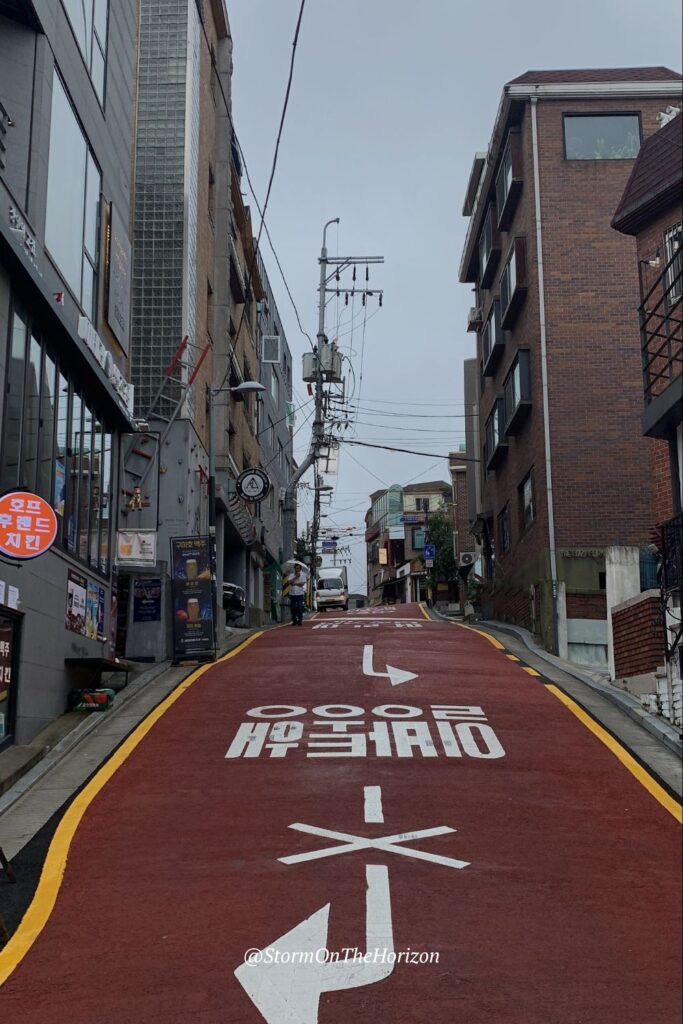
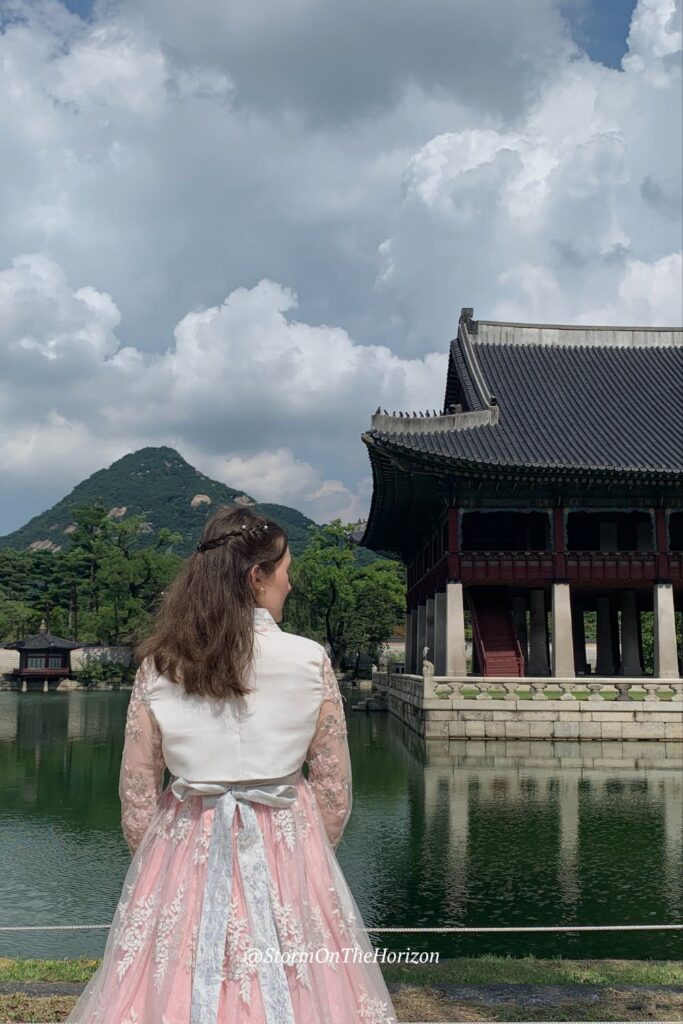
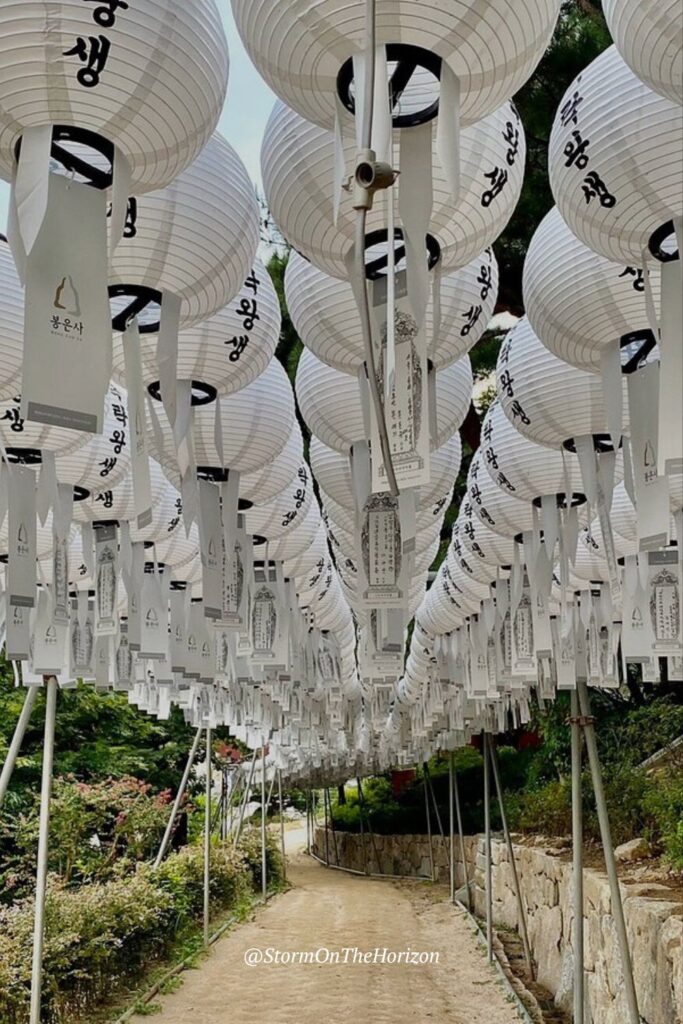
When’s the best time to travel to Seoul (based on the weather)?
South Korea’s weather can be neatly split into four distinct seasons.
What’s Spring like in South Korea?
Spring weather in South Korea
Mid-March to Mid-June
Spring (and autumn) are often the best times to visit. Often known as cherry blossom season, Spring is beautiful (and busy). Flowers are in bloom, the sun’s out, landscapes are green, and daily temperatures are around 8°C – 20°C.
Because of the lovely weather, tourist attractions are busier, and hotel and flight prices tend to be more expensive.
What’s Summer like in South Korea?
Summer weather in South Korea
Mid-June to end-August
Summer heat takes hold from around the middle of June and lasts until the end of August. This is the hottest time to visit South Korea and air-conditioning will become your best friend. Temperatures range from 23°C – 30°C but often go higher.
In August 2023, Korea experienced several days of +35°C degree weather.
In Summer, it’s also the wettest and most humid time of the year, with monsoon rains making up half of South Koreas rainfall in just a few months. If you’re travelling to South Korea in the summer, bring light clothes, raincoats, and purchase an umbrella at a convenience store.
What’s Autumn like in South Korea?
Autumn weather in South Korea
September – mid-November
Autumn is one of the best times to visit South Korea. After a few warm days in September (between 19°C and 26°C), the temperature begins to cool. T-shirts are fine to wear all through the day but by the middle of October, you may want to think about packing extra layers.
South Korea’s fall foliage is another highlight of this time of the year, turning the peninsula into a riot of reds, oranges, and bright yellows for several weeks in October and November. By the end of November, temperatures are as low as 4°C and 12°C.
What’s Winter like in South Korea?
Winter weather in South Korea
Mid-December – mid-March
Winter in South Korea is relatively dry and freezing cold with temperatures regularly in the minuses and sometimes as low as -15°C.
If you’re travelling to South Korea in winter, you’ll likely see snow so bundling up is essential. More adventurous travellers can enjoy skiing and snowboarding in some of the provinces.
Can I speak English in South Korea?
Let’s put it this way: If you don’t speak any Korean, it will be helpful to have a translator app (see the section on useful apps) while you’re travelling.
In touristy areas of Seoul, like Myeongdong, Itaewon, Gangnam and Hongdae, you’re more likely to meet locals who speak some English, but I wouldn’t say English is widely spoken in Korea.
Learning a few Korean phrases will help you navigate off the beaten track and connect with locals on a deeper level. Going an extra step and learning to recognise key words in Hangeul (the Korean alphabet) will make your trip far easier, too.
Practical examples of the language barrier:
In touristy areas, you’ll find road signs and store directories are mostly in English and Korean. In restaurants and cafes (in these areas too), there are often English menus. Almost all kiosks inside restaurants can be swapped over to English.
Signs for the bathroom? Not always in English. And when you’re buying something from a convenience store, asking for directions, speaking to a taxi driver, or placing an order in a restaurant you’ll most commonly be spoken to in Korean.
Do I need a visa?
South Korea has made it easy for many travellers by setting up an electronic visa system. To see if you’re eligible for a K-ETA (Korean Electronic Travel Authorisation), take a look at the K-ETA-eligible countries.
South Korea Travel Tip: Until the end of 2024, travellers from 20+ countries don’t even need a K-ETA to visit Korea. Find out more about the K-ETA-exempted countries here.
If your country isn’t on the K-ETA list, you may need to get a visa to travel to South Korea. You can view the visa entry requirements for your country here.
How much should I budget for my trip to South Korea?
Naturally, your travel budget depends on the experiences and activities you want to have.
When you’re planning a trip, there are a lot of budget lines to consider from accommodation, flights, travel insurance, visa costs, data and SIM cards – and that’s before you’ve even started exploring. There’s still food, activities, tours, transportation, shopping, and skin treatments (if that’s your thing) to consider.
A quick budget breakdown – based on my trip to Seoul:
Day-to-day (excluding flights and hotels), I’d recommend budgeting 60,000 KRW – 100,000 KRW (that’s £36 | $48 | ZAR 840 – £60 | $80 | ZAR 1,400) per person, per day.
That comfortably covers food, transport, activities, entrance fees, and some (but not a lot) of shopping.
Examples of how much things cost in Seoul:
How much will I spend on public transportation in Seoul, daily?
When you tap in to ride the Seoul metro, you’ll be charged: 1,400 KRW (£0.84 | $1.12 | ZAR 20) for the first 10km. A bus trip will set you back: 1,500 KRW (£0.90 | $1.20 | ZAR 21).
Estimated daily public transportation cost in Seoul
If you’re visiting more than one area a day and using various forms of public transportation between sites, you can expect to spend between 6,000 KRW – 8,000 KRW a day (£3.60 | $4.80 | ZAR 84 – £4.80 | $6.40 | ZAR 112).
How much should I budget each day for food in South Korea?
That depends on what you’re eating (of course) but it also depends on where you’re eating.
Cost of a meal at Korean restaurants in Seoul
If you’re eating out at a Korean restaurant, you’ll be spending between 8,000 KRW – 12,000 KRW (£4.80 | $6.40 | ZAR 112 – £7.20 | $9.60 | ZAR 168) per meal.
Craving Western food?
If you’re looking for a sit-down meal from a Western restaurant in South Korea, expect to budget 14,000 KRW – 25,000 KRW (£8.40 | $11.20 | ZAR 196 – £15 | $20 | ZAR 350) per meal.
Fast food like Subway, Shake Shack, Pizza and the like are much cheaper: More in the range of eating at a Korean restaurant.
How much is street food in Seoul?
Street food items are priced between 2,500 KRW – 10,000 KRW (£1.50 | $2 | ZAR 35 – £6 | $8 | ZAR 140). And trips to the convenience store will cost you a few thousand won each time, too.
I budgeted 45,000 KRW (£27 | $36 | ZAR 630) per person, per day for food in South Korea. That’s more than enough to eat your way through the city. It doesn’t take into account that you may want to visit a Korean café…
How much does it cost to visit a cafe in Seoul?
If you’re planning on visiting one of the almost 100,000 cafes in Seoul, you’ll spend anywhere between 6,500 KRW – 16,000 KRW (£3.90 | $5.20 | ZAR 91 – £9.60 | $12.80 | ZAR 224) per visit.
How much does it cost to visit a cafe in South Korea?
A coffee from Starbucks or other coffee chains in Korea costs around 5,000 KRW.
At an independent café, expect to pay 6,000 KRW (£3.60 | $4.80 | ZAR 84) or more for the same thing. Desserts are usually around 6,000 – 10,000 (£3.60 | $4.80 | ZAR 84 – £6 | $8 | ZAR 140) each.
16,000 KRW (£9.60 | $12.80 | ZAR 224) will cover one beverage and one dessert at most cafes.
Remember if you’re visiting a café or two: You aren’t going to need 3 full meals a day. So, take that into account when planning your trip budget.
Here’s my guide to 30+ unique cafes in Seoul, if you’re interested. Use code FOODIE for 25% off.
How much should I budget for activities in South Korea?
Examples of how much activities in Seoul cost:
- Entry into one of the five palaces in Seoul is between 1,000 KRW – 3,000KRW (but free if you’re wearing Hanbok).
- Renting a Hanbok costs between 10,000 KRW – 30,000 KRW (£6 | $8 | ZAR 140 – £18 | $24 | ZAR 420) depending on what accessories and add-ons you want.
- Here’s a the place I went in Insadong, near Gyeongbok Palace.
- A trip to the observation deck of NSeoul Tower/ Namsan Tower is around 20,000 KRW (£12 | $16 | ZAR 280). Book now.
- A colour analysis in Seoul can cost between 100,000 – 180,000 KRW (£60 | $80 | ZAR 1,400 – £108 | $144 | ZAR 2520)
- If you’re planning on going to Nami Island – a return ticket on the ferry will cost 16,000 KRW (£9.60 | $12.80 | ZAR 224) or if you’re adventurous, the zipline to Nami Island will cost 50,000 KRW (£30 | $40 | ZAR 700)(with your ferry trip back included).
- I recommend travelling there yourself (I share how to get to Nami Island via public transport here) but there are also tours to Nami Island.
- Want to take photos at a photo booth in Seoul? That experience will start at 4,000 KRW (£2.40 | $3.20 | ZAR 56).
Practical breakdown of what I spent in Seoul:
As always, I’ve shared prices in Korean won, pounds, dollars and South African rands.
- What I spent in Seoul ft. Gyeongbok Palace, two vegan cafes, and souvenir shopping in Insadong.
- What I spent visiting Nami Island in South Korea (without taking a tour).
- How much I spent in Seoul on a random day ft. Grabbing breakfast at Holly’s, a photo booth, eating lunch at a vegan restaurant in Itaewon.
Should I use cash or a card in South Korea?
Credit cards are widely accepted in Korea. Commonly recognised credit cards in South Korea are Visa, Master Card and American Express to name a few.
When you’re planning to travel abroad, remember to inform your bank so there are no payment disruptions.
All that said, if you plan to eat at street food markets in Seoul or shop in their underground shopping malls, cash will be required. And I always recommend you carry some cash…just in case.
Do you need cash in Seoul?
Storm’s experience: When my bank card didn’t work in South Korea
During all my time in Seoul, there were only two instances where I *had* to pay cash (besides the street food markets).
In both situations, the company didn’t accept non-Korean bank cards. Once at a nail salon and another time when I was getting my caricature drawn. Having some cash on hand while travelling is always advisable.
Where can I exchange cash in Seoul?
I like exchanging some money before I touch down in a new country. It’s just one less thing to worry about.
If you want to exchange money in South Korea, I *wouldn’t* recommend the airport: The exchange rates aren’t favourable. Instead, visit a currency exchange walk-in in the city. You can find them easily by searching: Currency Exchange on Kakao Maps or Naver Map.
If you’re less worried about the exchange rate and after convenience: There are exchange booths at the airport and you can draw Korean won through your card at an ATM (make sure it’s marked as an International/ Global ATM).
Where should I stay in Seoul?
Before you start looking at accommodation in Seoul or trying to decide whether you want to stay in an Airbnb, hotel, or hostel, or try out a unique Hanok stay, I recommend thinking about what you want to see while on your trip.
Seoul is an incredibly connected city. Moving around with public transportation is a breeze – but it still helps cut down on commute time if you’re in a neighbourhood that suits your lifestyle and caters to the activities you want to do.
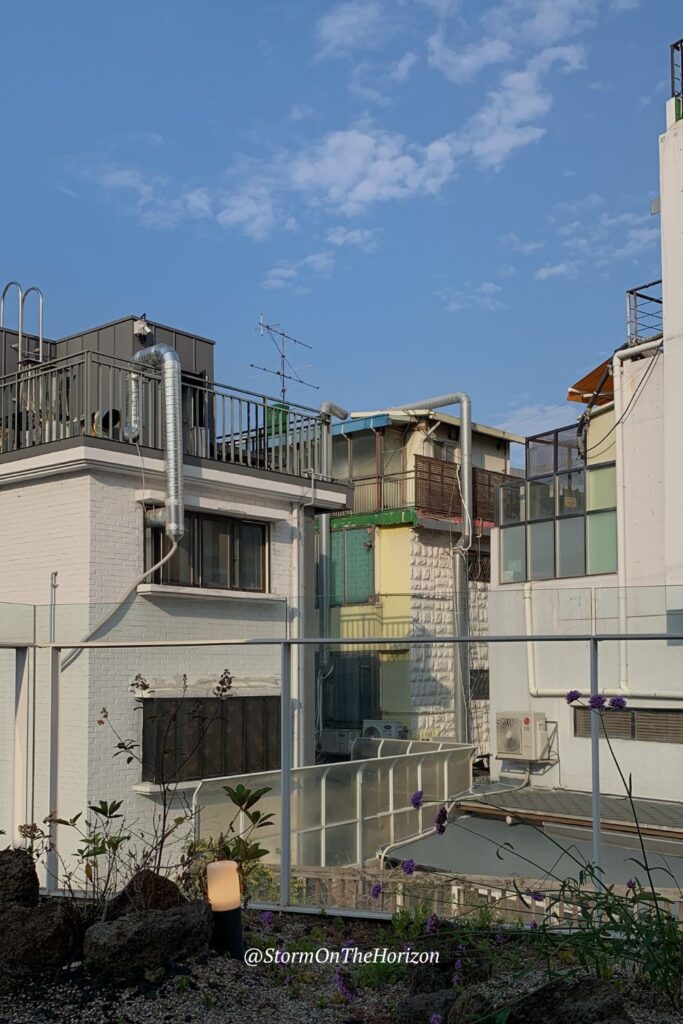
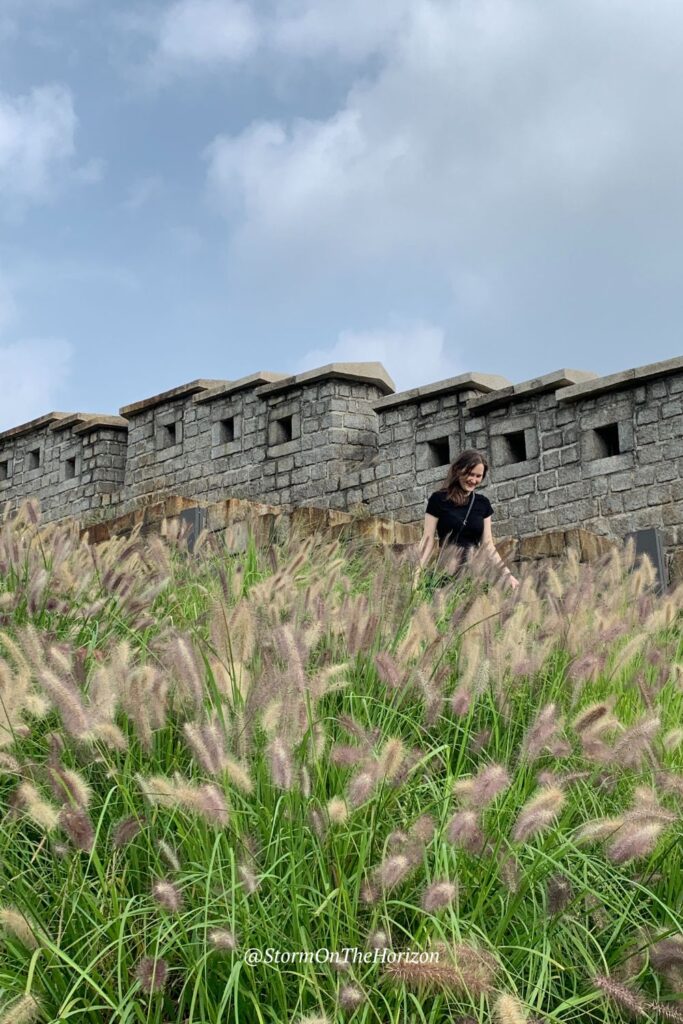
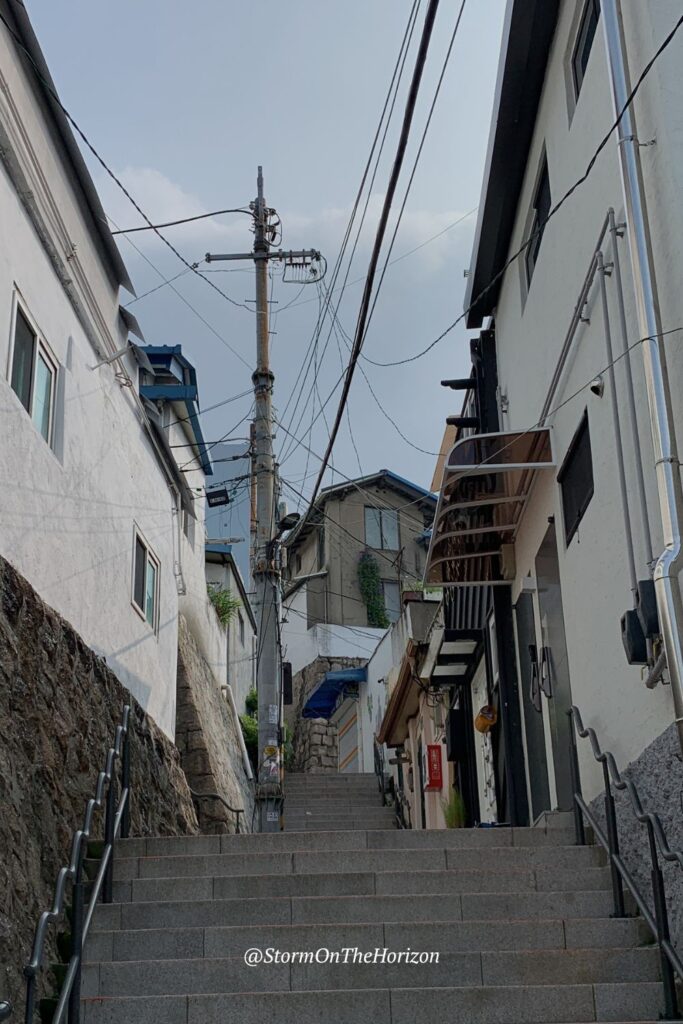
Which Seoul neighbourhood is best for tourists?
A quick rundown:
- The most convenient neighbourhood, for sightseeing and shopping is Myeongdong.
- Hongdae and Itaewon are known for their nightlife.
- Gangnam is popular for skincare treatments and shopping (particularly higher-end shopping).
- Insadong is known for being an older part of Seoul. It’s famous for its pedestrianised shopping street and traditional tea houses.
- Ikseon-dong and Yeonnam are for my fellow café-hopping travellers.
These locations all offer a range of accommodations, suitable for various budgets, but clarifying what you’re interested in seeing is a great first step.
Should I book a hotel, Airbnb, or hostel in Seoul?
In my experience, accommodation can make or break a trip.
When you’re choosing where to stay in Seoul, consider your non-negotiables.
Things to consider before booking accommodation:
Do you need free Wi-Fi? If you’re staying for a while, do you want a washing machine? Is free breakfast a must-have or are you planning to grab a quick bite at a coffee shop or convenience store? How do you feel about having to follow Koreas recycling rules? Are you planning to cook meals or eat out? How far is the walk from your accommodation to a subway line?
I’d recommend looking at options on sites like Bookings.com. You can find budget-friendly options, mid-range hotels, upscale and luxury accommodations that suit your travel style.
What travel adapter do I need in South Korea?
South Korea uses the same adaptors as European countries (Type F and C) plug sockets with a standard voltage of 220.

How to be a considerate traveller in South Korea:
It goes without saying: There are going to be cultural differences when you’re travelling abroad. Here are some South Korean etiquette tips to be a considerate traveller in South Korea.
My golden rule: Do as the locals do.
Restaurant, garbage and cultural etiquette for tourists in South Korea
Etiquette you should know when travelling to South Korea
There is no tipping culture in South Korea.
Tempted as you may be to tip people for good service, in Korea there is no tipping culture. Honestly, it can be confusing to some Koreans if you offer a tip. My rule: Unless there’s a tip jar, don’t offer one.
Give and receive with two hands, please.
If you’re receiving or passing items (especially money), it’s polite to use two hands or one hand, with the other hand supporting your elbow.
Take off your shoes.
Before you enter a building, café or temple (and definitely if you’re going to someone’s house), check if there are shoes at the door. It’s common to remove your shoes before entering.
Don’t stick your chopsticks in your rice bowl. It’s a funeral ritual.
Temple-dress code:
If you’re planning to visit a temple in Korea, keep your shoulders and knees covered.
Don’t write names in red. It’s a sign of death.
Sort your garbage
South Korea has pretty strict waste disposal rules. For this reason, you also won’t find trash cans while you’re out and about on the streets of Seoul.
When throwing away your garbage in Korea, you’ll have to sort it into different categories including: Recyclables, food waste, and general waste.
In cafes and metro stations, adhere to the signs and in Airbnbs, check with your host if there are no waste disposal rules displayed (but they likely will be displayed).
Etiquette in South Korea: Public Transportation and Crossing Roads
Etiquette for the metro in South Korea:
Don’t sit in priority seats.
Pink seats are reserved for pregnant women and there are four priority seats in the front and back of each subway car reserved for the elderly, disabled, for patients or people with young children. Don’t sit in them – even if they’re free/ the train is empty.
Keep the volume down.
Keep your voice down on the train and in buses. Loud conversations and phone calls are considered rude. If you want to watch a video or listen to music, use headphones.
Join the queue.
If you’re waiting to catch a train or bus in South Korea (and even when getting off), people form queues. This goes for busy cafes and restaurants, too. Join in, don’t cut in line.
Follow the arrows.
When you’re climbing stairs in the metro stations (and there will be a lot of stairs), follow the arrows so you’re walking on the correct side, to aid the flow of traffic.
Etiquette for crossing streets in South Korea
Wait for the green light at the crosswalk.
In many countries, it’s okay to cross a street if there are no cars coming (even if the signal for pedestrians is red). In Korea, that’s not a thing. Even if there isn’t a single car on the road, it’s normal for Koreans to wait until the light turns green. When in Korea, do as the Koreans do.
Don’t push the button below the crosswalk light.
In some (maybe most?) countries, you can press the button on a traffic signal to prompt the pedestrian crossing light. In South Korea, the button on the traffic signal is for assistance (if you need help crossing the street) (for example, for blind people).
Data connectivity
Do you need data in Seoul?
Getting some sort of data connectivity is essential wherever I go. I like being able to use navigation and translation apps without worrying about data charges, connecting with family and friends back home, and (let’s be real) scrolling on social media.
Most hotels in Seoul have free Wi-Fi, but when you’re out and about, I’d advise getting a SIM card, E-SIM or Pocket Wi-Fi device.
What’s better when travelling: SIM Cards or Pocket Wi-Fi?
When it comes to data connectivity, everyone’s needs are different. Here are the pros and cons of SIM Cards, E-SIMs, and Wi-Fi devices.
Pros and Cons of local SIM Cards when travelling
Benefits of getting a SIM Card over Pocket Wi-Fi when travelling abroad
- You have the option to get a local number. This is useful because some restaurants and cafes require a number if you plan to book a table or hold your spot in a queue.
(I often get asked: Do you need a Korean number when you’re travelling in Korea? No. You can get by without one, but it’s easier to have one if you plan to visit trendy cafes, book hair and nail appointments or make reservations for workshops.) - You have the option (depending on the package) to make SMS’s/ Calls and receive them from back home.
- You don’t need to carry an extra device around (namely, the pocket WiFi)
Drawbacks of getting a local SIM card when travelling abroad
- You’ll need an ‘unlocked’ phone to use a SIM card. If your phone is locked to a certain service provider/ carrier in your home country, you won’t be able to use a SIM card in a different country.
- You’ll have to swap out your SIM card and store your primary SIM card in a safe place.
E-SIMs when travelling: Pros and Cons
Benefits of getting an E-SIM over Pocket Wi-Fi when travelling
- Most of the benefits are the same as a normal SIM card: You have the option to get a local number, have SMS and calling functionality, don’t need to carry an extra device and:
- You don’t have to swap out your current SIM. The greatest benefit of an E-SIM is that it’s electronic. You can simply load the E-SIM onto your phone, configure the settings and off you go.
Drawbacks of getting an E-SIM when travelling abroad
- You’ll need an ‘unlocked’ phone to use an E-SIM card. If your phone is locked to a certain service provider/ carrier in your home country, you won’t be able to use a SIM card in a different country.
- E-SIMs, at least in Korea, cost more than a standard SIM or Pocket Wi-Fi device.
Pros and Cons of Pocket-WiFi when travelling abroad
Benefits of getting Pocket WiFi over local SIM cards when travelling
- There’s no messing around with your SIM card
- Pocket Wi-Fi can often connect to more than one device which is convenient if you’re travelling in a group or if you have multiple devices to connect.
Drawbacks of getting a WiFi Device/ WiFi Egg when travelling abroad
- You’ll have to carry your Wi-Fi Egg/ Wi-Fi device with you.
- If you rent a Wi-Fi device, you’ll have to return it. (Just a case of factoring that time into your travel day.)
- You’re limited by battery life. The main reason people struggle with Pocket WiFi devices is due to the battery draining too quickly and them not having enough time to charge it before heading out again.
Which SIM card should I get in South Korea?
Before you purchase or book a SIM card, make sure the size is compatible with your phone (standard/ micro-SIM/ Nano-SIM). Most iPhones use Nano-SIMS or E-SIMS. Most Android phones use Micro-SIMs.
Where can I buy a SIM card or Pocket Wi-Fi Device in South Korea?
You can easily book a device, SIM card (or E-SIM) online or purchase them directly at Incheon Airport/ Gimpo Airport when you land.
Book a SIM card/ E-SIM / WiFi device on Klook
Remember to select the correct pick-up destination for your SIM card or WiFi Pocket device.
If you’re a first-time shopper at Klook, and you book through their mobile app (which you’ll need for redeeming your QR codes), you can use the discount: APP10TW for 10% off.
Where to purchase SIM cards or WiFi devices at Incheon airport
There are various kiosks in the airport run by Korean mobile services (some of the most common operators are: SKT, LG U+, and KT). You’ll find these just beyond the terminal.
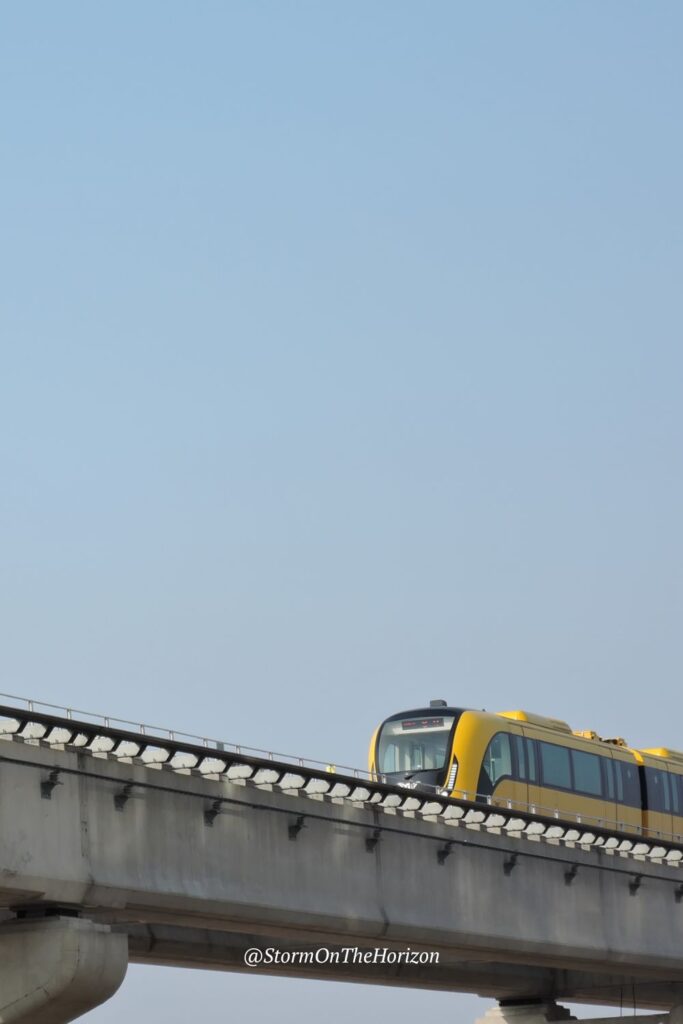
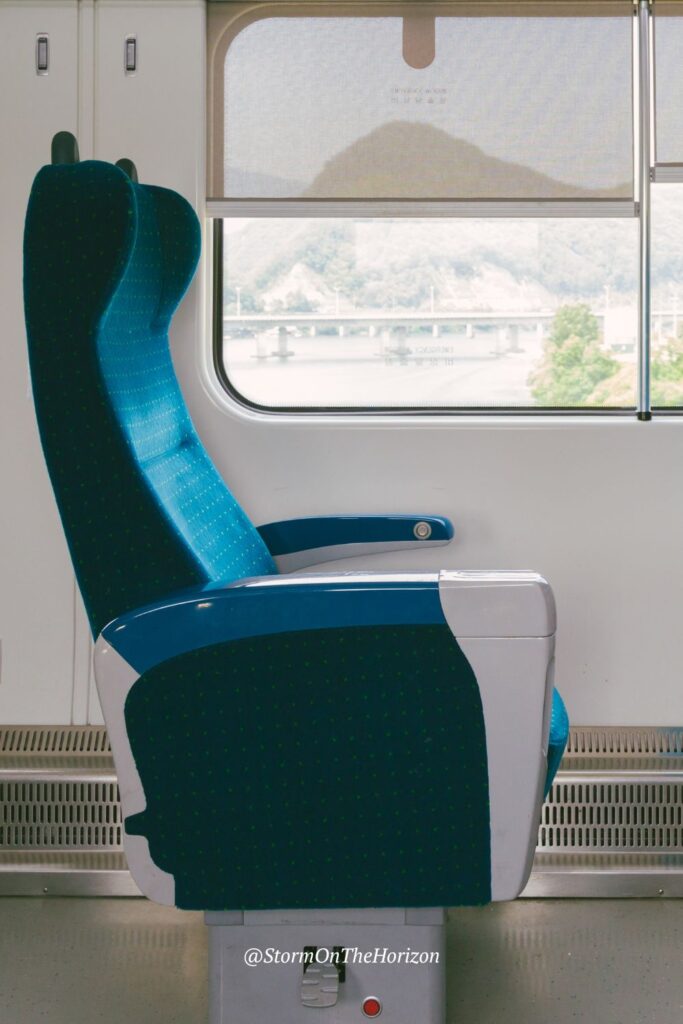
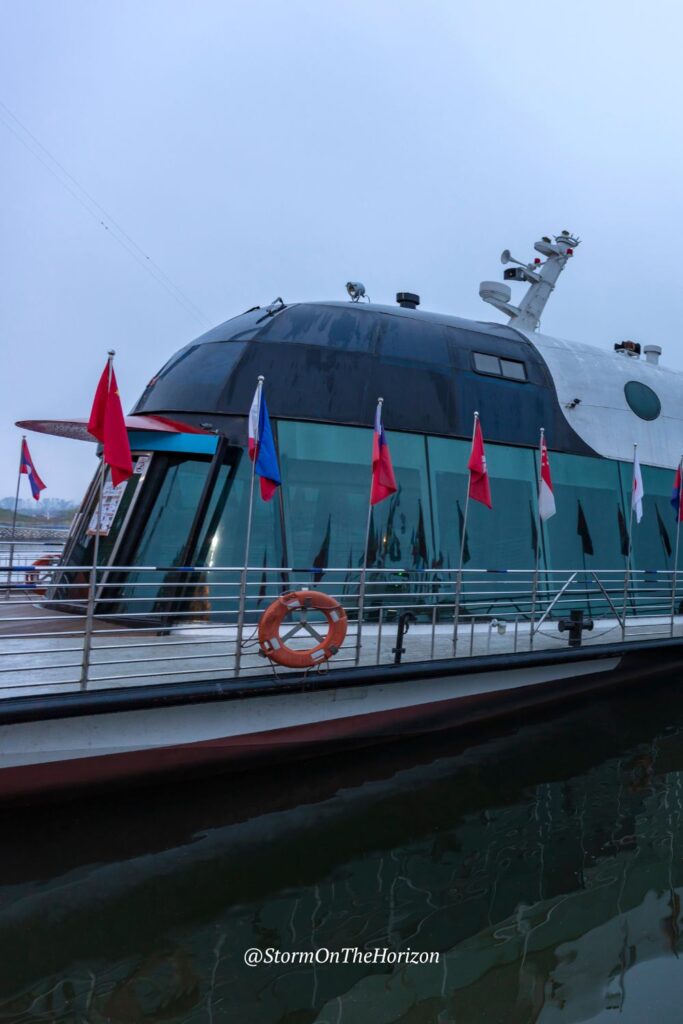
Booking activities, useful apps and getting around
How do I get a transportation card in Korea?
If you’re coming to South Korea, you need a transport card.
What is a transportation card for in Seoul?
Transport cards allow you to catch buses, trains on the Seoul Metro, some ferries, and even taxis across South Korea (not just Seoul).
These cards are easy to use (just tap them against card readers when entering metro stations/ climbing on busses) and can be recharged and topped up with Korean won when your balance is running low.
Which transport card should I get in South Korea?
There are various transport card options:
Most common transportation card: T-Money Card
Everything you need to know about a T-Money card:
- T-Money cards can be used across the whole country.
- Price and pick-up: Purchase T-Money cards from convenience stores (they cost 4,000 – 7,000 KRW) (£2.40 | $3.20 | ZAR 56 – (£4.20 | $5.60 | ZAR 98).
- Top up your T-Money card in any metro station or convenience store.
- Benefits: T-Money cards never expire so if you come back to Korea (or should I say when you come back to Korea), you can use the same card.
- You must use cash to top up your T-Money card.
Transportation card: Namane Card
Everything you need to know about Namane cards:
- Namane cards function like T-Money cards in that you can use them on buses and on the metro.
- What makes Namane Cards unique is that they can also be used as a normal Korean debit card – in all stores across the country.
- You can top up the Namane card by card (with a small transaction free) or with cash (no transaction fee) and check your balances (split between transportation and normal spending) on the Namane app.
- Another unique aspect of the Namane card is that you can customise what it looks like; loading your own image or design onto the card.
- Price of the Namane card: 7,000 KRW (£4.20 | $5.60 | ZAR 98).
- You can buy one when you arrive, from a kiosk in the CU, or book it online and design your card in advance.
- The drawback of a Namane Card: Unlike the T-Money card, which you can top-up at any convenience store or metro station, there are only specific spots where Namane kiosks are located.
If you’re staying in a hotel that has a Namane kiosk in their lobby, and you’re worried about your debit card not working, it could be a good option for you. If you don’t have a kiosk nearby, my recommendation is to stick to a T-Money card.
Transportation and attraction card: Discover Seoul Pass
The Discover Seoul Pass acts as a transportation card
I explain what the Discover Seoul Pass is, in the next section. When it comes to using the Seoul Pass as a transport card, it’s important to know you can use it before and after the pass duration. More on that below.
Where to book activities in South Korea
If there are activities in South Korea you know you want to do or Seoul tourist attractions you know you want to see, it can be helpful to book in advance.
If you’re more of a book-on-the-day kind of traveller, you’ll have to double-check availability. Depending on the time of year, you may not be able to and for very popular, specialised, activities like getting your personal colour analysis done it’s best to book weeks in advance.
To book activities in Seoul, I recommend Klook. I use it all the time in South Korea (and the rest of the world).
Klook is trustworthy, used widely and filled with local tours, day trips beyond Seoul, attraction tickets and unique experiences like a workshop to making Korean alphabet jewellery , wearing Hanbok, Korean cooking classes, and even practical things like booking SIM Cards and Airport Transfers.
Is the Discover Seoul Pass worth it?
You may have heard about the Seoul pass before. If not, I’ll catch you up: The Discover Seoul Pass functions as an admissions ticket (or gives you discounts) for 101 attractions in Seoul within 24, 48, or 72 hours.
Another great feature of the Discover Seoul Pass is that it acts as a transport card too; allowing you to use on card for sightseeing and travelling on buses and in the metro (I talk more about how to use public transportation further down). Book the Seoul Pass here.
Will the Seoul Pass still work as a transportation card after it expires?
Yes! If you purchase a 24-hour Seoul Pass, it will still act as a transportation card for the rest of your trip in South Korea.
If you plan to visit multiple Seoul attractions in quick succession, the Seoul Pass is a great option to save money while travelling.
Useful apps you’ll need when travelling in Korea

Papago for translations
In South Korea, the biggest hurdle you’ll have is the language barrier. Papago is the best Korean-to-English translation app I’ve found. Get Papago for free for Apple or Android.
You can translate phrases on the go and easily take/ upload pictures to translate text (great for menus!).
AirVisual for air pollution
Face masks are often worn in South Korea because of fine dust pollution. With AirVisual (Apple/ Android), you can easily see when it’s advisable to go out in a mask.
Essential app for vegetarians and vegans travelling anywhere
Happy Cow
Being vegetarian is totally manageable in South Korea but I’ll be honest: It requires extra planning. You can’t step into just any restaurant and expect there’ll be options for you.
Happy Cow is a map app (and website) that shows restaurants (around the world) that are vegan, vegetarian or restaurants that have veggie options.
Apps for getting around in Korea
NaverMap or Kakao Maps for navigation
Say goodbye to Google Maps. In South Korea, Google Maps has limited functionality and doesn’t always accurately get you to where you need to go.
Instead, try out NaverMap or Kakao Maps. These are the most used options. Personally, I’m a Naver Map gal (I think it’s just a case of choosing one and sticking with it, so you understand how the app functions).
Download: Naver Map for free for Apple or Android. Download Kakao Maps for free for Apple or Android.
KoRail app for trains outside of Seoul
If you’re planning on travelling to different cities in South Korea, by train, it’ll be useful to have the KoRail App (Koreas official rail app). The KoRail website is just as user-friendly if you prefer booking train tickets on a web browser.
Is it worth getting a Korean Rail Pass?
What is the KR Pass and how does it work?
The Korea Rail Pass (KR Pass) provides unlimited rides on almost all the trains operated by South Korea’s major railway provider KORAIL.
If you’re planning to visit more than one area in South Korea (beyond Seoul) (for example: Busan or Daegu), consider getting the KR Pass – it covers 80 routes, over 600 stations and there are options for flexible or consecutive day travel.
Take a look at the details/ book the KR Pass on Klook.
KakaoT for taxis
Cabs are really affordable (dare I say cheap) in Korea compared to European cities.
Public transportation is so well connected in Seoul, that you likely won’t *need* to catch a taxi but it’s a reliable option. KakaoT (download for Apple/ Android) is a cab-catching app: Super easy to use once you’ve got the hang of it and you can pay with either a credit card, cash, or a T-Money card in the cab.
Seoul Bike for city bike rentals
If you have ‘riding a bike along the Han River’ on your Seoul travel bucket list, you’ll want this app. There are many bike-rental options at places like the Han River or Seoul Forest, but Seoul Bike (download for Apple/ Android) is a simple way to rent and return city bikes across the city.
Check-list: Everything you need to do before leaving the airport in South Korea
Before you start your journey to Seoul from the airport, here’s a recap of what you need to have done:
- Get a SIM card/ E-SIM / WiFi Pocket Device
- Exchange/ draw cash
- Get a transportation card and top it up with some Korean won.
How to get from Incheon airport to Seoul
Incheon International Airport (ICN) and Gimpo International Airport (GMP) are the main airports connecting South Korea to the rest of the world.
Most likely, you’ll arrive at Incheon Airport which is 1 hour from Seoul. Gimpo, 40 minutes from Seoul, is mostly used for short-haul or domestic flights (so if you’re going to places like Busan or Jeju by plane, this is likely where you’ll fly from).
Different ways to travel from Incheon Airport to the heart of Seoul:
Catch the Airport Railroad Express (AREX Express)
AREX is a high-speed train service providing a fast and affordable way from Incheon to Seoul Station.
| AREX operation times: | 05h00 – 22h00 every day |
| Travel time from the airport to Seoul by AREX | When catching the AREX train, there is either an Express to Seoul (43 minutes) or All Stops option to Seoul (59 minutes). |
| Price of an AREX Express ticket | 9,500KRW for adults (£5.70 | $7.60 | ZAR 113). |
| Price for an AREX All Stops ticket | 4,000KRW (£2.40 | $3.20 | ZAR 56) Unlike the Express Train, you don’t need a specific ticket, you can enter the all-stops train service by tapping your transportation card; as you would when catching the subway normally. |
| Booking link | Make an AREX Ticket Reservation on Klook. Once you arrive at Incheon Airport, you can use your pre-booked AREX QR code to redeem a ticket for the train (your pre-booked voucher won’t be impacted by delays/ long waits at customs). |
Once you reach Seoul Station, by AREX, you’ll still have to navigate to your hotel
If you catch the AREX, you’ll likely still have to catch the subway to your hotel. Naver Map is an excellent guide when using public transportation: It’ll tell you which line to catch and even which subway cart to climb on for easy transfers.
Seoul Travel Tip: I wasn’t kidding when I said there are a lot of stairs in the Seoul Metro stations.
If you’re catching the AREX train, you will have to navigate up and down several flights of stairs depending which subway line you need to travel on. It’s manageable if you can carry your luggage up those stairs – but worth knowing ahead of time.
If you’re worried about the stairs, consider catching a different form of transport from the airport.
Catch the Airport Limousine Bus
Airport limousine buses are a convenient way to reach various destinations in Seoul. The driver will help you by loading your bag/s into the bus, you hop on and then get off when it reaches your stop.
| Airport Limousine Bus operation times: | 24/7 |
| Travel time from the airport to Seoul by limousine bus | It depends on where you’re going. Several hotels are along the limousine bus routes; making it so easy to get off the bus and walk into your hotel. Check the various routes on their website here. |
| Price of the Airport Bus in Seoul | 10,000 – 20,000 KRW (£6 | $8 | ZAR 140 – £12 | $16 | ZAR 280) depending on where you’re getting off. |
| More information | Airport Bus times, stops and fares are here. |
Seoul Travel Tip: If you’re worried about booking ahead of time (because of delays/ etc), you can purchase your bus ticket at the airport between Exit 4 and 5.
Catch a taxi from the airport
The cost of catching a taxi from Incheon to Seoul depends on the traffic conditions and your end location. It’s usually cost around 70,000 KRW (£42 | $56 | ZAR 980) if you’re headed to the heart of Seoul. You can use KakaoT to get a taxi when you arrive.
An important travel tip when catching a taxi in Korea: Have a copy of the address where you’re going (written/ typed in Korean) to show the driver.
Drivers will often only speak Korean/ limited English. Showing them where you’re going (with a Korean address) will make the experience easier for everyone.
Book a private driver
You can book a private driver. There are various services on Klook that offer Airport Transfers from Incheon Airport.
How to use public transportation in Seoul, South Korea
Once you’ve used public transportation in South Korea, you’ll dream of it forever. So efficient, so well connected, so affordable, so safe, so clean.
I love travelling in Seoul via public transport. It can feel a little overwhelming when you’re trying to figure out how everything works but once you have the hang of it, getting around Seoul is really easy.
Avoid travelling at rush-hour
Try to avoid travelling peak hours in Seoul as it gets really, really crowded in trains and buses. Rush hours are: 06h30 – 09h00 in the morning and 16h30 – 19h00 at night.
Can multiple people use one travel card in South Korea?
My recommendation: Get everyone in your travel group a T-Money card.
But technically the answer is yes and no – depending on how you’re travelling.
If your group is travelling on the Seoul Metro, everyone needs their own T-Money/ transportation card. But if you’re travelling by bus in Seoul, you can use one T-Money card – you’ll just have to ask the driver to charge you for however many passengers you have.
Tips for using the Seoul Metro
Seoul’s subway system is world-famous – and for good reason. Its 20 subway lines are easy to navigate and allow you to reach what feels like all corners of the city in no time at all.
| What times does the Seoul Metro operate? | 05h00 – 00h00 or 01h00. After 01h00, you’ll have better luck catching a night bus or taxi. |
| How much is Seoul Metro’s fare? | Travelling your first 10km will cost 1,400 KRW (£0.84 | $1.12 | ZAR 20). If you’re travelling more than that, a small additional fee will be charged when you leave the station. |
Air-conditioned in summer, warm in winter, always clean: Subway is by far my favourite way to travel in Seoul.
The Seoul Metro map was updated in December 2023, after 40 years
Here’s a comparison of the old and new Seoul Metro maps. The new one is the tidy one with the big circle.
Remember these subway etiquette tips in South Korea
- Don’t sit on seats designated for pregnant woman (pink seats) or the four seats at the end of each carriage (those are priority seats for the elderly/ disabled).
- Keep your volume down (this goes for all public transportation). And it includes the volume of your voice. It’s considered rude to speak loudly on public transportation in South Korea.
Tips for catching a bus in Seoul
Catching a bus in Seoul is just as reliable as catching the subway. It’s cost-effective, far-reaching and a great option if you want to see Seoul while travelling from place to place.
| What times do buses in Seoul operate? | Regular buses run from 04h00 – 01h00. After 01h00 in Seoul, you’ll have to catch a night bus – called Owl Buses (올빼미 버스) – which run from 01h00 – 04h00. |
| How much is bus fare in Seoul? | Bus fare is 1,500 KRW (£0.90 | $1.20 | ZAR 21) for a single journey. |
How to catch a bus in Seoul
Here’s what you need to know:
- Enter buses in South Korea at the front door.
- Tap your T-money/ transportation card on the reader next to the bus driver.
- Move quickly to find your spot/ seat. One thing I wasn’t prepared for is how quickly bus drivers take off: They’ll start moving before you’re seated.
- Often, the screen and spoken announcements about stops are only in Korean so I suggest keeping track of the route on your phone. NaverMap is great for this.
- Before you reach your stop, press the red “Stop” button located in various parts of the bus.
- Once you’ve pressed the “Stop” button, you can tap your T-Money card again on the card reader at the back door (near the middle of the bus).
- You’ll notice most Koreans get ready to climb off the bus before the bus driver has come to a stop. Do as the Koreans do; gather your things and get ready to leave promptly.
Buses are colour-coded in Seoul
Red buses are headed out of the city, blue buses connect different districts within the city of Seoul, and green buses generally stay in the same district. Yellow buses in Seoul make little loops around neighbourhoods.
Tips for using a taxi in South Korea
Taxis are affordable in South Korea, at least when compared to taxis in Europe. When the taxi meter starts running, it’ll already account for the basic fare: 4,800 KRW (£2.88 | $3.84 | ZAR 68). You’re charged per km.
To catch a taxi, you can wait at a Taxi Stand at main tourist attractions and metro stations, hail one off the streets by raising your hand or use KakaoT: The Taxi app.
How to hail a taxi in Seoul
Here’s what you need to know:
- Taxis are generally white or orange in South Korea.
- There’s a display in the windscreen of all taxis in South Korea. In most parts of the world, red means no/ full/ busy but in South Korea, seeing a red sign that says “빈차” in a taxi means it’s available/ accepting rides. (Green signs mean taken and blue means not working/ not in operation.)
- Simply raise your hand to hail a taxi off the street.
- Have a Korean address ready. Most taxi drivers don’t speak a lot of English so have a Korean version of the address you’re going to ready to show them.
- Payments can be done by cash, TMoney or debit cards at the end of your trip.
Best places to visit in Seoul
When I travel somewhere new, I like seeing postcards come to life: The iconic tourist attractions that millions of people flock to each year – but I also love diving into a city, finding the gems most tourists don’t know about and some spots the locals love.
So, here’s that list: A mix of must-see sites as well as some unique workshops and experiences that’ll make any trip to Seoul memorable.
If you interested in which activities to add to your Seoul itinerary, jump here. And if you’re looking for unique workshops/ two must-do tours for BTS ARMYS, that’s below too.
Iconic Seoul Tourist Attractions
N Seoul Tower
Should I go to Namsan Tower? Key points:
N Seoul Tower (also commonly called Namsan Tower) is an iconic landmark and observation tower in the heart of Seoul, South Korea.
What is there to do at Namsan Tower?
- Take in the views of the cityscape, surrounding mountains and Han River.
- Eat at one of the 6 restaurants/ cafes at Namsan Tower.
- Send a postcard from the top observation deck.
- Add to the famous “Locks of Love”. You can purchase padlocks and a marker from the souvenir store and leave it among the thousands of other messages.
- At 15h00 each day, there is a Korean cultural performance in front of the tower.

N Seoul Tower – which was Seoul’s first radio tower – boasts 360-degree views of the city from 236m up in the air.
Address: 서울 용산구 남산공원길 105
105 Namsangongwon-gil, Yongsan-gu, Seoul, South Korea
NaverMap link for Namsan Tower.
Book tickets to visit Namsan Tower.
See what it’s like to go: Watch my 1min mini vlog at Namsan.
Lotte World Tower
Should I go to Lotte Tower? Key points:
Lotte World Tower is an architectural marvel, standing at 555 meters tall, making it the 6th tallest building in the world.
What is there to do at Lotte World Tower?
- Take in the incredible views of Seoul from the Lotte World Tower observation deck.
- After redeeming your ticket for the observation deck, you hop into the elevator for a minute-long ride to the 118th floor. Along the way, you watch an animated experience showing a time-lapse of the construction of Lotte Tower.
- On floor 120 – the Sky Terrace – you have the chance to stand outside and feel the breeze – hundreds of meters up in the air.
- There are a few cafes where you can grab a treat, too.
Lotte World Tower is a 123-story, 555-meter-tall skyscraper in Sincheon-dong, Seoul. It is the sixth-tallest building in the world and – as you’d expect – provides incredible views.
Address: 서울특별시 송파구 올림픽로 240
240, Olympic-ro, Songpa-gu, Seoul
NaverMap link for Lotte Worl Tower.
Book tickets to visit Lotte World Tower.
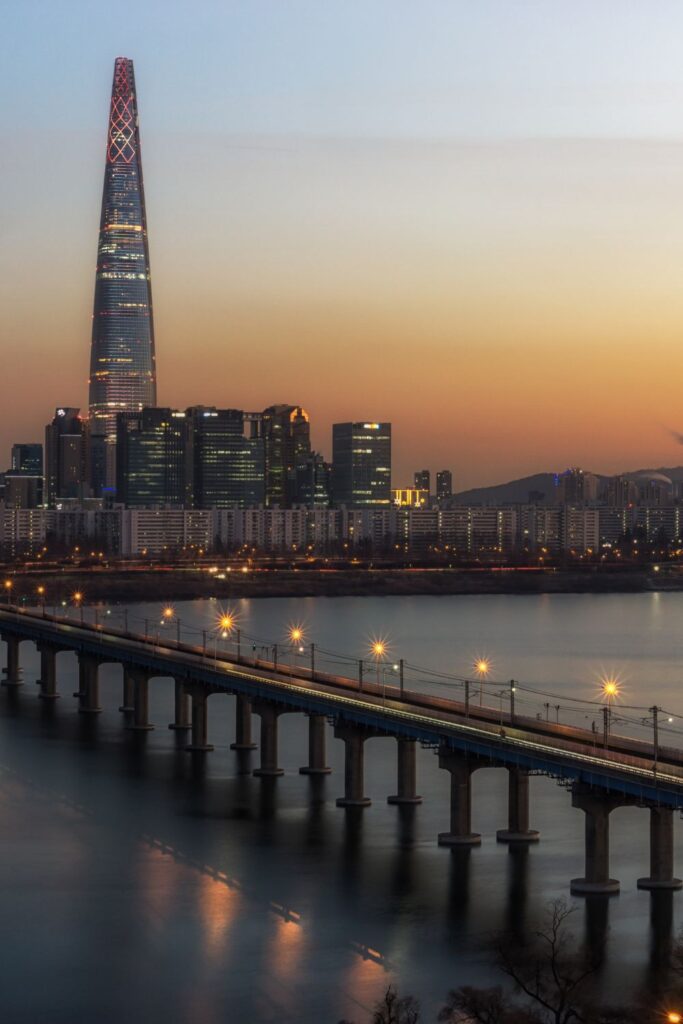
Banpo Hangang Park
Should I go to Banpo Hangang Park? Key points:
The views of Seoul from Hangang Park are beautiful.
What is there to do at the Han River Park?
- Rent a bicycle and cycle along the paths by the Han River.
- Take a ride on the swan boats.
- Get snacks from the nearby convenience store and have a picnic.
- Enjoy getting away from the hustle and bustle of the crowds in Seoul.
- Every evening 19h00 to 21h00, 10,000 lights on the Banpo River Bridge light up. There’s a 20-minute light and fountain show spanning the 1140m bridge. And the best view of the Rainbow Light show is right here: At Banpo Hangang Park. Shows are cancelled if it’s raining.
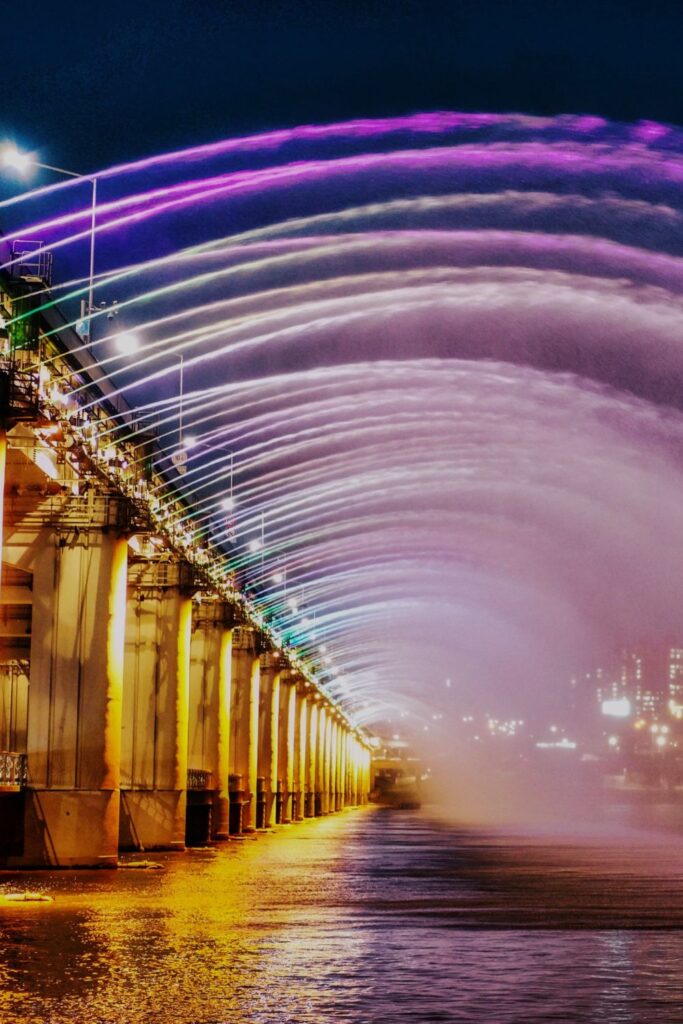
If having a picnic by the Han River is on your Seoul bucket list or you want to see the Rainbow Fouintain show, Hangang Park is a must-visit.
Address: 서울 서초구 신반포로11길 40 한강공원 반포 안내센터
115-5 Banpo-dong, Seocho-gu, Seoul, South Korea
NaverMap link for the Banpo Hangang Park.
Free to visit.
Bongeunsa Temple
Should I go to Bongeunsa Temple? Key points:
When it was originally constructed, Bongeunsa Temple (which used to be known as Gyeonseongsa Temple) was located near the Royal Tomb of King Seongjong. During Joseon King Myeongjong’s reign, it moved to its current spot: Just north of COEX mall.
This is a beautiful Buddhist Temple in Seoul, known for its colourful lanterns and calm scenery.
What is there to do at Bongeunsa Temple?
- Take in the views of the temple and enjoy the colourful lanterns.
- On the 9th day of the 8th month, of the Lunar Calendar, the Buddhist ceremony called Jeongdaebulsa is held, where monks march through the temple, carrying some of the 3,479 scriptures housed here on their heads.
Known for its beautiful lanterns, Bongeunsa Temple – a Buddhist Temple near COEX mall in Seoul – is home to 3,479 Buddhist scriptures of 13 types.
Address: 서울특별시 강남구 봉은사로 531
531, Bongeunsa-ro, Gangnam-gu, Seoul
NaverMap link for Bongeunsa Temple.
Free to visit.
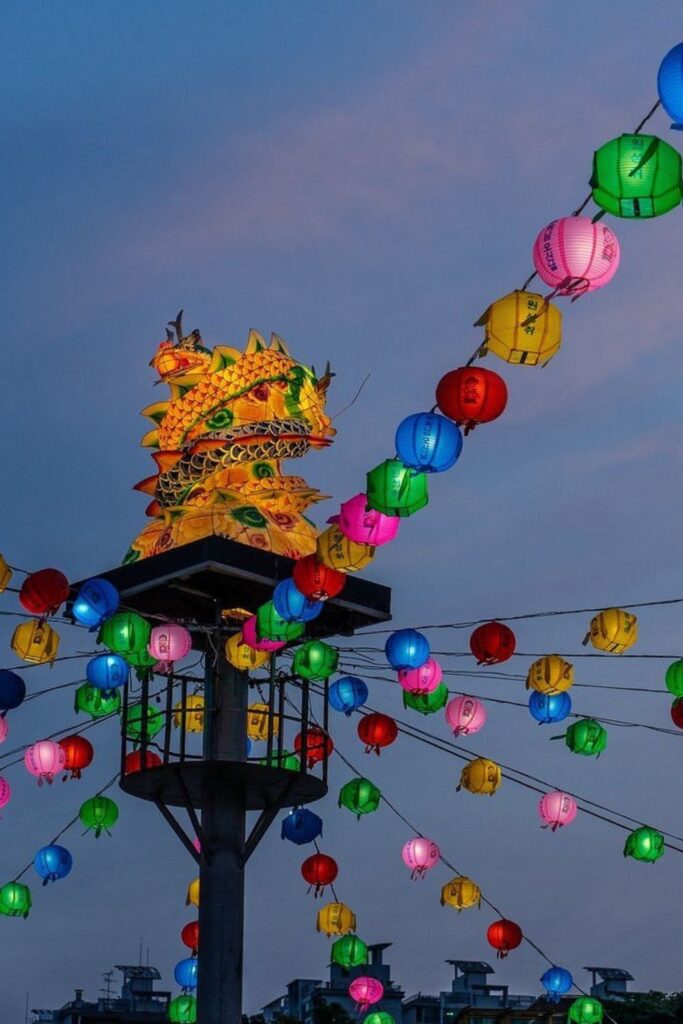
Visit a Palace
Which of Seoul’s five Royal Palaces should I visit? A brief rundown:
- Gyeongbokgung Palace | 경복궁
- Closed on Tuesdays. 3,000 KRW entry.
- Its development marked the official change of Korea’s capital to Seoul.
- The most beautiful and biggest. Also, the most visited.
- Changdeokgung Palace | 창덕궁
- Closed on Mondays. 3,000 KRW entry.
- Most well-preserved of all the palaces in Seoul.
- Known for its ‘Secret Garden.’ Visits to the Secret Garden are strictly regulated but so worth it: It’s so beautiful. Prices for a garden tour are 8,000KRW on top of the entry fee.
- Unlike the other palaces, with a set layout, Changdeokgung Palace was built to harmonise with nature so it feels totally different to the other palaces.
- It’s been a UNESCO World Heritage sight since 1997.
- Changgyeonggung Palace | 창경궁
- Closed on Mondays. 1,000 KRW entry.
- The most unique aspect of this palace is the botanical garden, which was added by the Japanese during one of their occupations of the palace. They also added a zoo, but it’s no longer at the palace.
- Deoksugung Palace | 덕수궁
- Closed on Mondays. 1,000 KRW entry.
- Famous for its stone-wall road (you’ve probably seen it in a KDrama!)
- The last King of Korea, Gojong, lived at Deoksugung in his later years.
- Gyeonghuigung Palace | 경희궁
- Closed on Monday (and 1 January). Free entry.
- Only 1/3 of this palace has been restored.
- This is the least-known of all five palaces in Seoul.
- In times of emergency, Gyeonghuigung is where the king was moved to.
Read this before planning a trip to Seoul’s palaces:
- Entry into each palace ranges from free to 3,000KRW.
- If you’re wearing Hanbok (Korean traditional dress), you’ll get in free.
- On the last Wednesday of every month, entry to Seoul’s palaces is free too.
- On National Korean Holidays (guess what?) entry to the palaces is free as well.
- Especially at the most visited palaces: The further in you go, the less busy (and thus more beautiful) it gets. I promise!
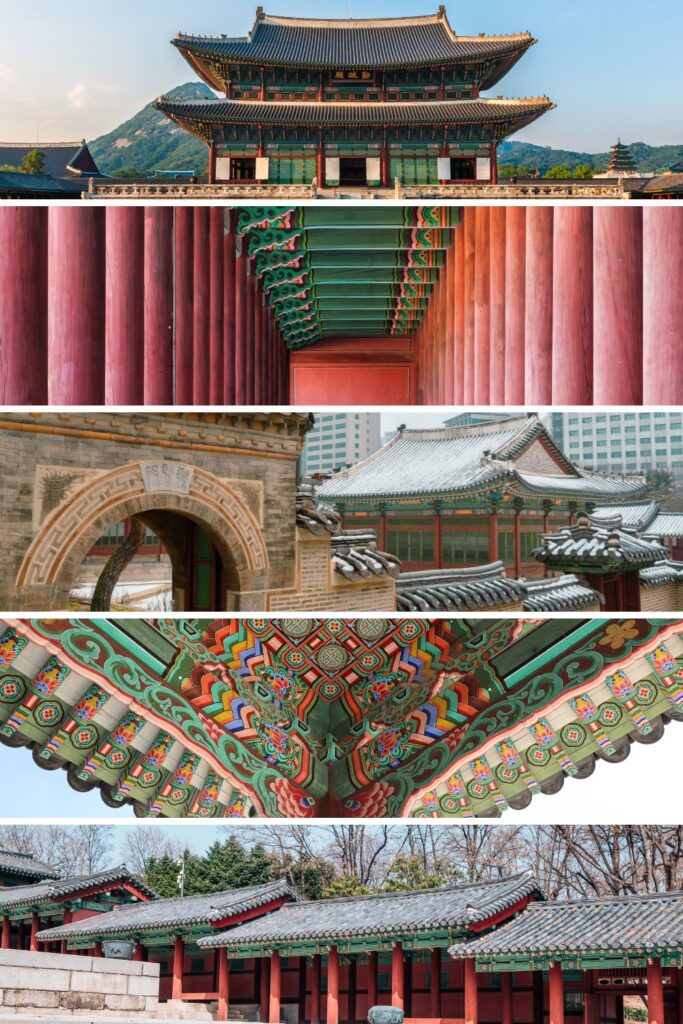
Most tourists visit Gyeongbokgung: The largest of all five of the palaces in Seoul – but there are five.
In the drop-down above, I’ve included brief notes about each and what makes it unique. From a palace that once held a zoo to the palace with a Secret Garden: It’s all in there.
No need to book. Prices range from 1,000 KRW to 3,000 KRW. More details in the dropdown.
Visit a Hanok Village
Which Hanok Village should I visit in Seoul? A brief rundown:
- Bukchon Hanok Village | 북촌 한옥마을
- Naver Map link.
- Be a considerate traveller. These Hanoks are residential houses so, keep your volume down and don’t trespass.
- You’ll find more than 900 Hanoks (traditional houses) in Bukchon Hanok Village, which date back to the Joseon Dynasty.
- Nearby is Gyeongbokgung Palace and Changeokgung Palace, making this Hanok Village an easy one to add to a Seoul itinerary.
- Namsangol Hanok Village | 남산골한옥마을
- NaverMap link.
- Namsangol Hanok Village is a restored Korean village which opened in 1998. It’s located near Namsan Tower.
- Here, you’ll find five restored hanoks (traditional Korean houses), a pavilion, a traditional garden and a stage.
- The five hanok houses at Namsangol Hanok Village used to belong to aristocrats and government officials of the Joseon dynasty. They used to be located in different parts of the city but were rebuilt here (all but one uses the original materials from the hanok).
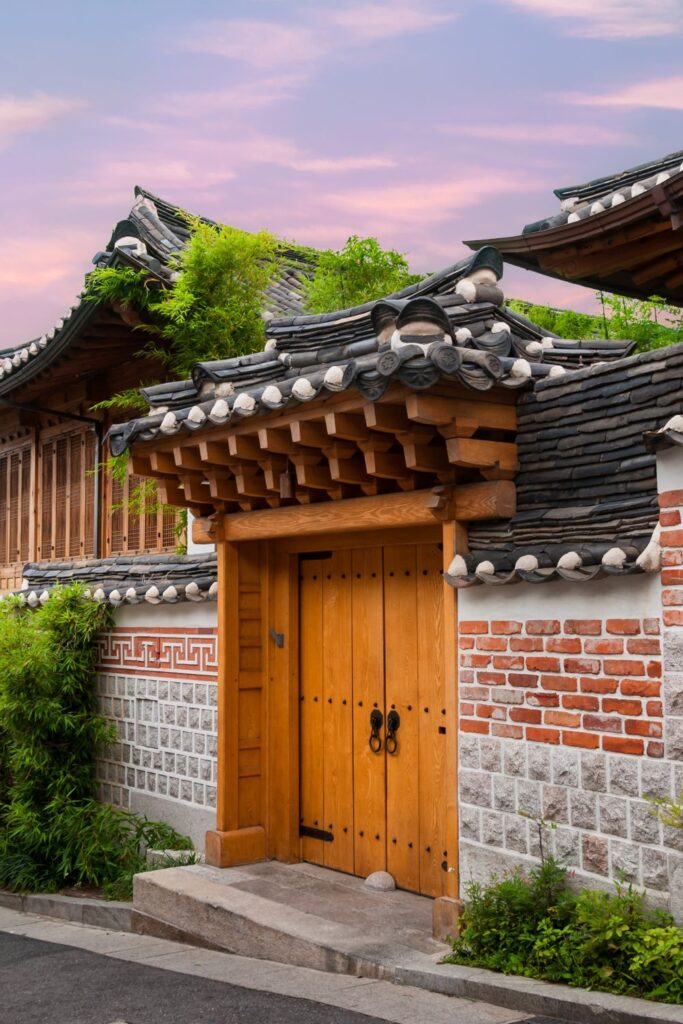
Step into South Korea’s past when you visit a Hanok Village. Hanoks are traditional Korean houses, built between 1392 and 1910 (the Joseon Dynasty period).
Hanok, their name, was created to contrast with the Western architectural style – called Yangok – in Korea.
Free to visit. See the drop-down above for Hanok Villages in Seoul.
Guide to 30+ unique cafes in Seoul
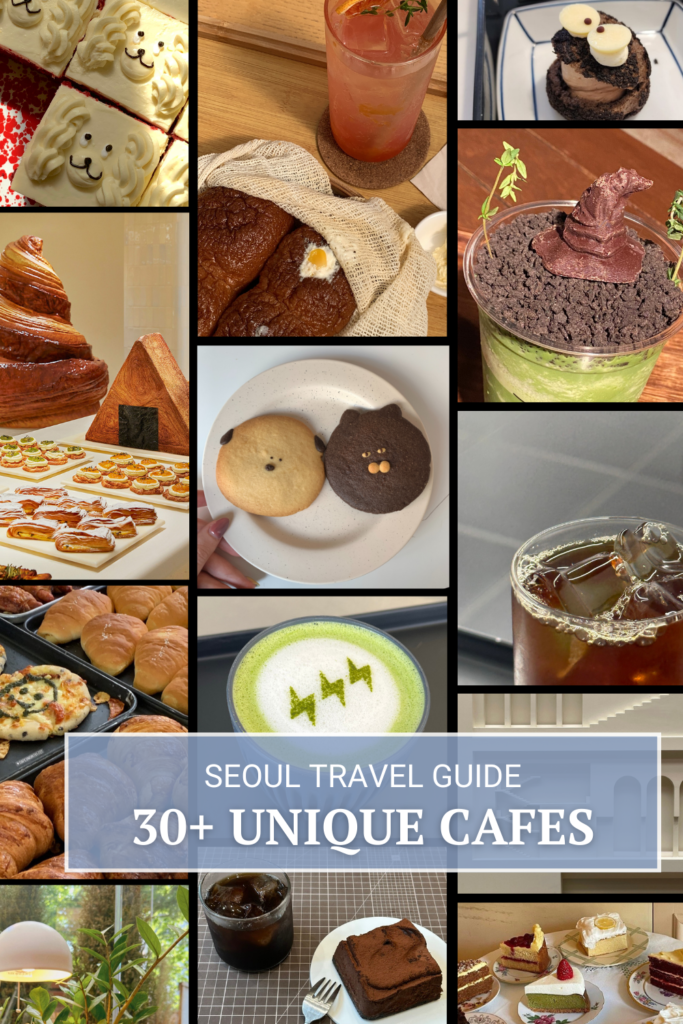
In January 2023, it was reported that there were almost 100,000 cafes in South Korea’s capital. And many of them are unique.
If you love cafe hopping but don’t want to spend hours researching or tracking down addresses, my guide to unique cafes in Seoul is just what you need when planning your trip.
Get my Seoul cafe guide here.
Use code FOODIE for 25% off.
What’s inside the cafe hopping guide:
- 30+ of the most Instagrammable cafes in Seoul, across 6 neighbourhoods.
- Notes about what makes the cafe special, if you should expect a queue and if there are vegan options available.
- My honest foodie opinions (because life’s too short for bad coffee and cake).
- Cafe etiquette in South Korea.
- Interactive Map for easy navigation.
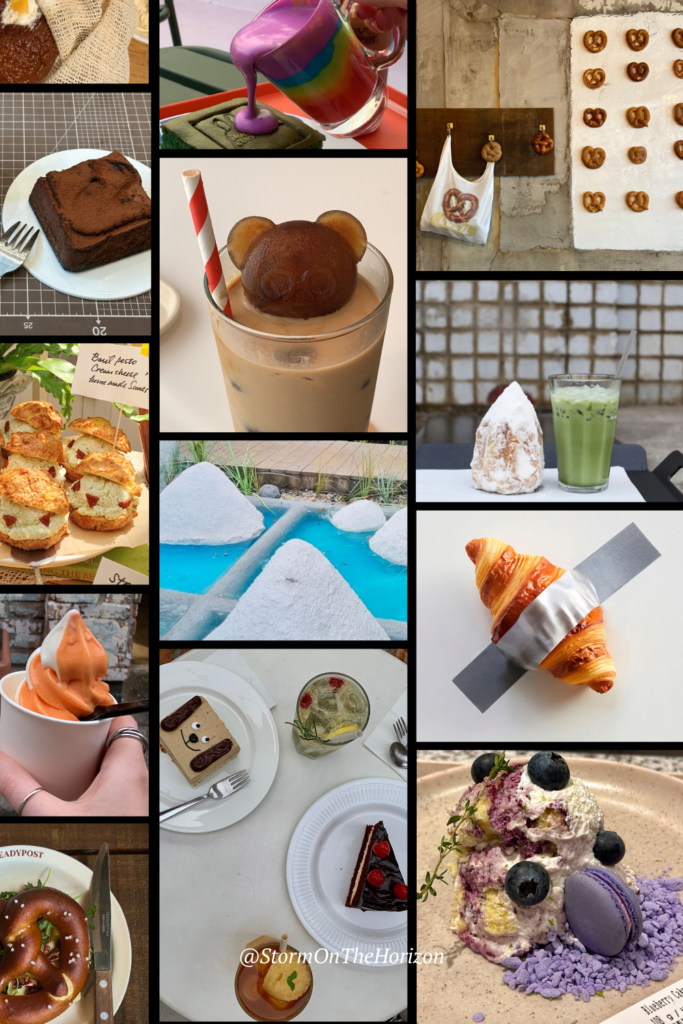
Activities to add to your Seoul Itinerary
- Noraebang (Karaoke)
- Rent Hanbok (my Hanbok experience)
- Take photos at a Korean photo booth
- Try Korean street food (vegetarian street food in Seoul)
- Ride a bike and have a convenience store picnic at the Han River
- Watch busking in Hongdae
- Go café hopping
- Make a DIY bag tag as a souvenir
- Eat at a convenience store
- DIY a souvenir to take home
- Do a local tour
- Join a food tour
- Join the Seoul Pub Crawl
- Get your personal colour analysis done (my colour analysis experience)
- Sign up for a unique workshop
Unique workshops for foodies and crafters in Seoul
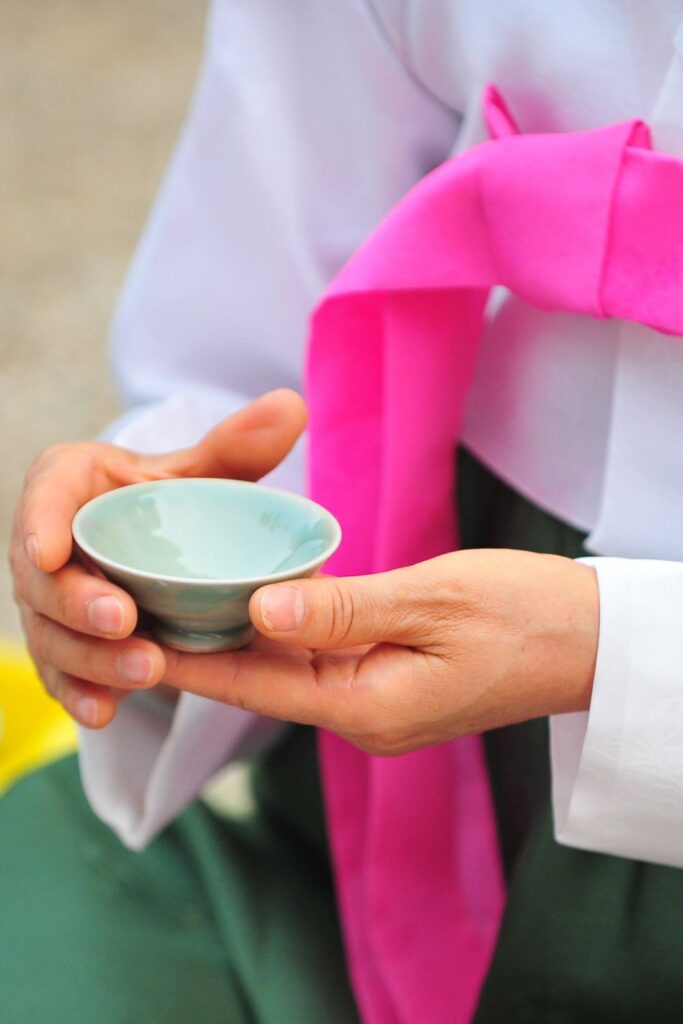
- Workshops the foodies:
- Experience traditional tea culture in Korea by attending a tea ceremony and learning how to make traditional Korean tea desserts.
- Make Makgeolli: Traditional Rice Wine
- Crafting Workshops:
- Korean alphabet jewellery making experience in Seoul: Such a unique souvenir to take home.
- Lipstick making experience: Perfect for the K-Beauty fans.
Unique BTS fan experiences in Seoul
- Do you know BTS? If you got that reference, you’ll love the BTS ARMY Tour. Walk in the footsteps of BTS in Seoul.
- If you’d like to visit the house BTS used to film ‘In the SOOP 2’, this one is for you. There are different package options (HIKR Ground/ the famous BTS bus stop at Hyangho Ground).
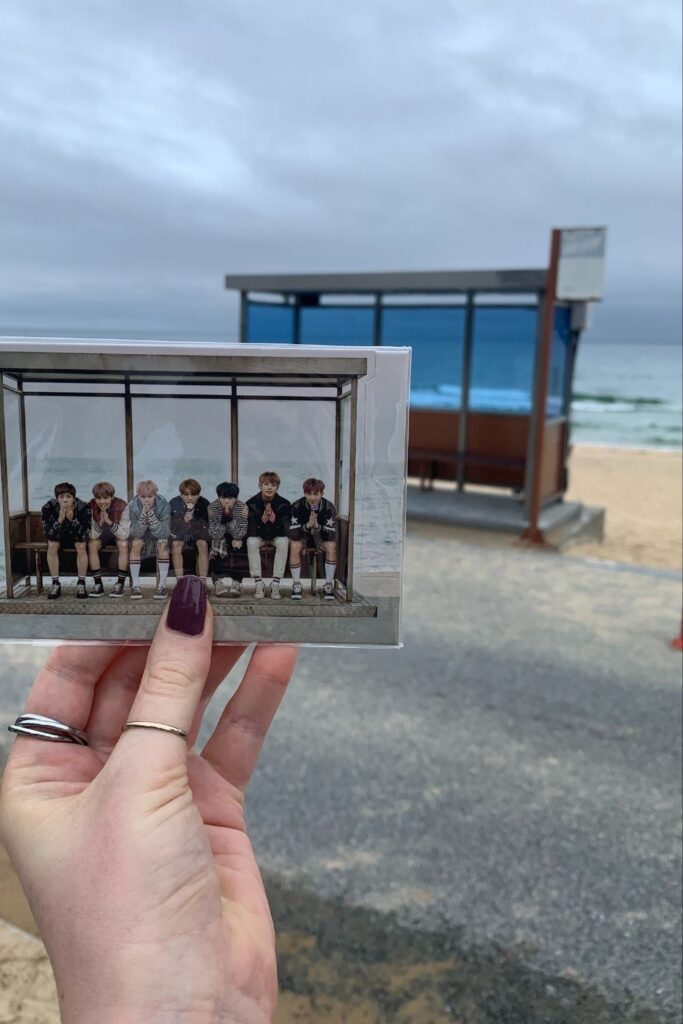
Remember to bookmark this South Korea Travel Guide
If you’re just starting to plan your trip, remember to bookmark this guide. I’m bound to add more to it when I’m back in South Korea, too.
Thank you for reading! Here’s to more travel on the horizon. *cheers*
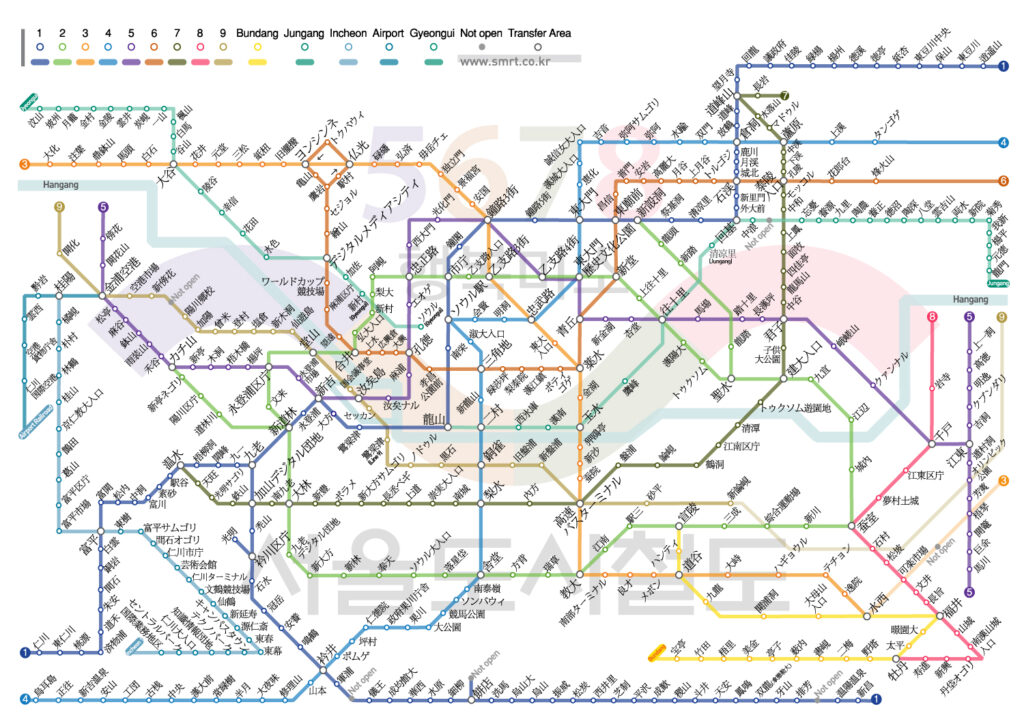
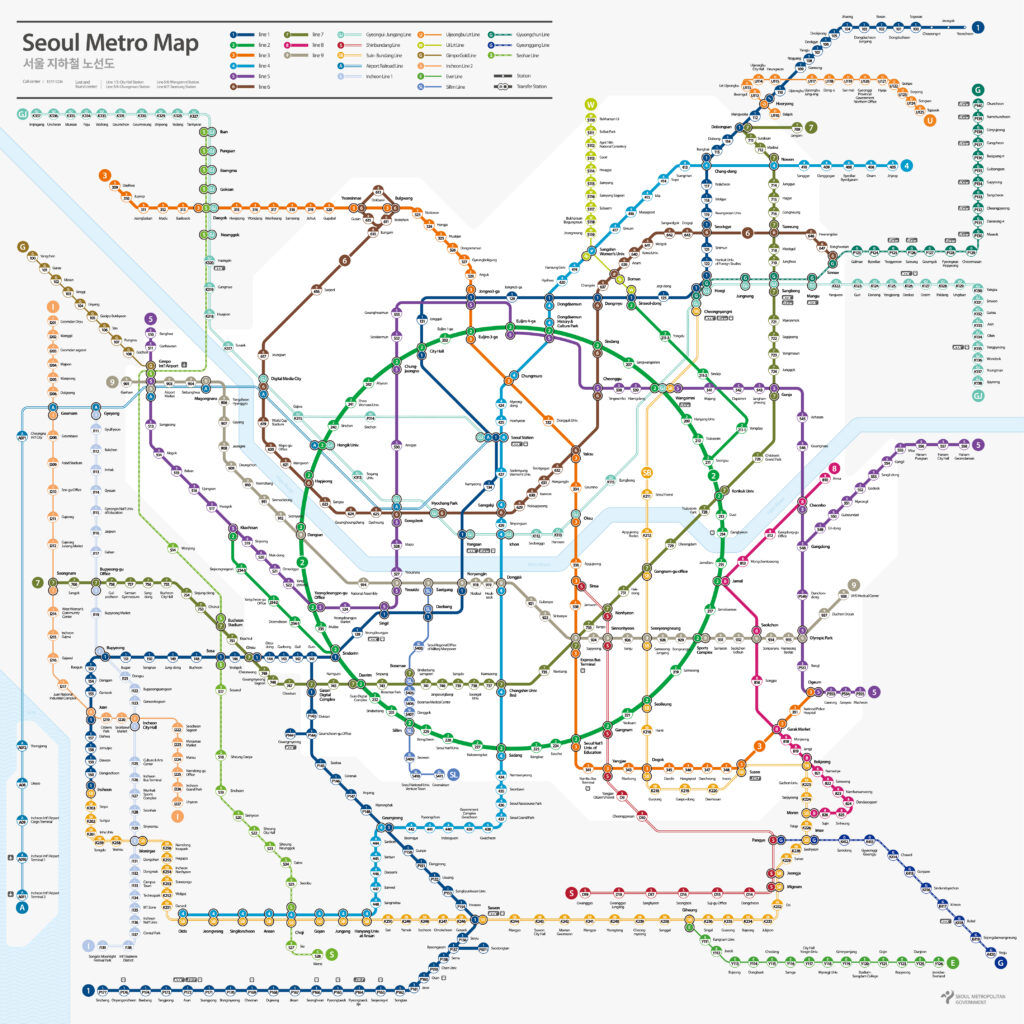
Storm, I enjoy so much reading about your blog!!! Thank you very much for sharing
Way better than any tour guide, so much detailed and offering tips
Im about to leave to SK in a few hours and cant wait to enjoy so many adventures as you did
You are my herooooooooooooooo